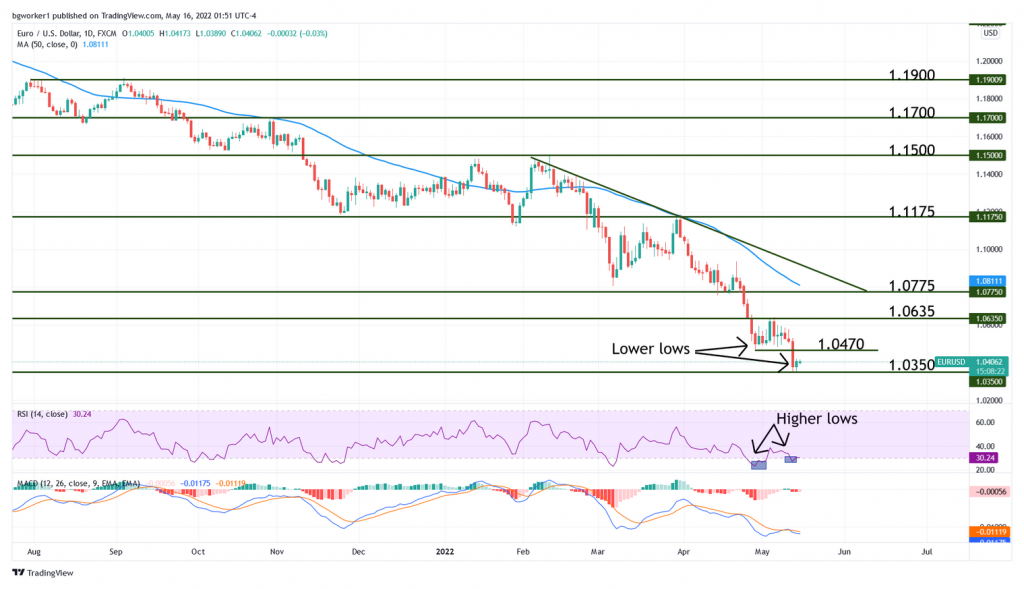U.S. Inflation Subsides. Greenback Prone to Mild Pullbacks
EUR/USD Touches 5-Year Low. Bullish Divergence in Play.
Inflation in the U.S. is starting to decline, according to last week’s CPI that showed the yearly core inflation rate dropped to 6.2% from the previous 6.5%. The monthly CPI showed a 0.3% change, which is a big deal considering that the previous reading was 1.2%.
Inflation will remain in focus this week, as Fed Chair Powell will speak about it Tuesday at a Wall Street Journal event and Eurozone CPI numbers are set for release a day later. The Euro is already on the ropes, having recently touched the 5-year low at 1.0350, which I have mentioned in a previous post. Thus, growing inflation in the Eurozone will likely bring additional pressure.
Key Events for the Week Ahead
Tuesday will be an important day for the US Dollar, with two major events. The Retail Sales report comes out at 12:30 pm GMT and is expected to show a 1.1% change from the previous 0.5%, while the forecast for the Core version is a 0.3% change (previous 1.1%). Sales made at retail levels account for the majority of overall economic activity, hence the strong impact on the currency.
Later in the day, at 6:00 pm GMT, Fed Chair Jerome Powell will speak about inflation at the Future of Everything Festival, an event organized by the Wall Street Journal. The topic is very sensitive and audience questions are expected, which means that volatility will probably increase during the event.
Wednesday at 9:00 am GMT, traders will focus on the Eurozone Final version of the Core CPI, which is expected to show a 3.5% change (previous 2.9%). Inflation containment is among the ECB’s primary goals, but thus far, we haven’t seen any decisive action. However, sooner or later the ECB will have to hike, which makes this release a key event to watch.
Chart Analysis – EUR/USD
The pair just recently touched a 5-year low located at 1.0350 and price action suggests that a pullback is likely to occur before moving closer to parity (1.0000). The obvious long-term downtrend is prone to short-term upswings due to its overextension.
The Relative Strength Index is signalling bullish divergence, which occurs when the price is making lower lows while the indicator is printing higher lows. This is a stronger signal when the pattern occurs at extreme levels (overbought or oversold), which is the case now.
More often than not, bullish divergence foreshadows a move up but the timing is rather difficult to predict. It looks like the pair is acknowledging the zone at 1.0340 – 1.0350, so we may see a bounce into the previous support zone located at 1.0470. The overall bias is bearish, with limited upside potential.
